Napoli

Napoli è una città unica e affascinante, ricca di storia, cultura e tradizioni. Spostarsi tra le sue vie è come entrare in un museo a cielo aperto, dove l’arte e la bellezza sono ovunque. Partendo da 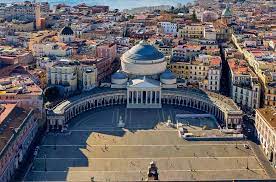 Piazza del Plebiscito, il cuore della città, si può facilmente raggiungere molti dei luoghi più iconici di Napoli. In questo articolo, esploreremo alcuni dei punti più interessanti da visitare per una piacevole giornata nel capoluogo campano.
Piazza del Plebiscito, il cuore della città, si può facilmente raggiungere molti dei luoghi più iconici di Napoli. In questo articolo, esploreremo alcuni dei punti più interessanti da visitare per una piacevole giornata nel capoluogo campano.
Napoli è una città antica, fondata dagli antichi greci nel VII secolo a.C. Nel corso della sua storia, la città è stata controllata da numerosi regni, imperi e governi, tra cui i romani, i bizantini, i normanni e gli spagnoli. Questa variegata storia ha lasciato la sua impronta sulla città, come evidenziato dalle numerose architetture e monumenti di Napoli. Il nome “Napoli” ha origini antiche ed è stato dato alla città dai greci, che la fondarono nel VII secolo a.C. Secondo la leggenda, il nome “Napoli” deriva dal greco “Neapolis”, che significa “nuova città”. Tuttavia, ci sono anche altre teorie sul significato del nome: una teoria suggerisce che il nome “Napoli” derivi dal termine greco “nauplia”, che significa “porto”, un’altra teoria suggerisce che il nome “Napoli” derivi dal termine etrusco “Napla”, che significa “luogo di fonti d’acqua”. In ogni caso, il nome “Napoli” è stato utilizzato per secoli per descrivere la città e la sua storia, e continua a essere uno dei nomi più iconici e riconoscibili al mondo.
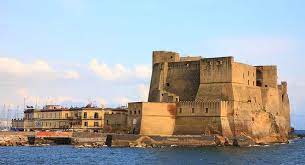 Il primo highlight da visitare è il Castel dell’Ovo, che si trova a breve distanza dalla Piazza del Plebiscito. Il castello risale al 12° secolo ed è costruito su un’isola artificiale di tufo. Secondo la leggenda, il nome del castello deriva dal fatto che un uovo magico è stato nascosto nelle fondamenta del castello per proteggerlo. Il Castel dell’Ovo offre una vista panoramica sulla città e sul golfo di Napoli, ed è il luogo ideale per scattare delle fotografie.
Il primo highlight da visitare è il Castel dell’Ovo, che si trova a breve distanza dalla Piazza del Plebiscito. Il castello risale al 12° secolo ed è costruito su un’isola artificiale di tufo. Secondo la leggenda, il nome del castello deriva dal fatto che un uovo magico è stato nascosto nelle fondamenta del castello per proteggerlo. Il Castel dell’Ovo offre una vista panoramica sulla città e sul golfo di Napoli, ed è il luogo ideale per scattare delle fotografie.
Il secondo highlight da visitare è il Maschio Angioino, 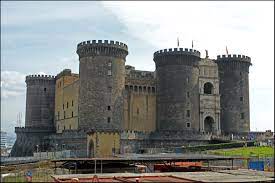 un castello medievale situato nel centro storico di Napoli. Costruito nel 1279, il Maschio Angioino è stato il centro del potere politico e amministrativo di Napoli per secoli. Oggi, il castello ospita mostre temporanee e eventi culturali, ed è possibile visitare le sue antiche sale e torri.
un castello medievale situato nel centro storico di Napoli. Costruito nel 1279, il Maschio Angioino è stato il centro del potere politico e amministrativo di Napoli per secoli. Oggi, il castello ospita mostre temporanee e eventi culturali, ed è possibile visitare le sue antiche sale e torri.
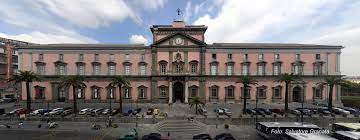 Il terzo highlight da visitare è il Museo Archeologico Nazionale di Napoli, che ospita una delle più grandi collezioni di arte e reperti archeologici del mondo. Il museo vanta una vasta collezione di opere greche e romane, tra cui le famose statue di Farnese, oltre a numerosi tesori della civiltà pompeiana, tra cui mosaici, affreschi e oggetti d’arte.
Il terzo highlight da visitare è il Museo Archeologico Nazionale di Napoli, che ospita una delle più grandi collezioni di arte e reperti archeologici del mondo. Il museo vanta una vasta collezione di opere greche e romane, tra cui le famose statue di Farnese, oltre a numerosi tesori della civiltà pompeiana, tra cui mosaici, affreschi e oggetti d’arte.
Il quarto highlight da visitare è la Cappella Sansevero, una chiesa barocca del XVIII secolo situata nel 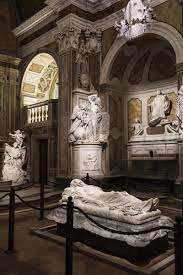 centro storico di Napoli. La chiesa ospita numerose opere d’arte, tra cui la famosa scultura del Cristo Velato, una meravigliosa opera d’arte che sembra essere avvolta in un velo trasparente.
centro storico di Napoli. La chiesa ospita numerose opere d’arte, tra cui la famosa scultura del Cristo Velato, una meravigliosa opera d’arte che sembra essere avvolta in un velo trasparente.
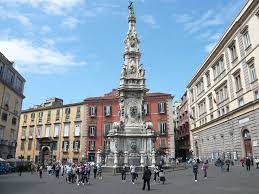 Il quinto highlight da visitare è la Piazza del Gesù, una delle piazze più antiche e affascinanti di Napoli. La piazza ospita la Chiesa del Gesù Nuovo, un esempio magnifico dell’architettura rinascimentale e barocca, e il Palazzo Pignatelli di Monteleone, una splendida dimora aristocratica del XVIII secolo.
Il quinto highlight da visitare è la Piazza del Gesù, una delle piazze più antiche e affascinanti di Napoli. La piazza ospita la Chiesa del Gesù Nuovo, un esempio magnifico dell’architettura rinascimentale e barocca, e il Palazzo Pignatelli di Monteleone, una splendida dimora aristocratica del XVIII secolo.
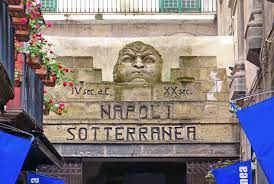 Oltre alle meraviglie di superficie, una delle attrazioni più affascinanti di Napoli è sicuramente la necropoli sotterranea che con una storia millenaria ha dato vita ad una serie di tunnel, gallerie, cisterne e grotte che si estendono sotto la superficie della città. Questo mondo sotterraneo è stato utilizzato per secoli come rifugio, cava di materiali da costruzione, cisterna d’acqua e persino come luogo di sepoltura. Le origini della Napoli sotterranea risalgono ai tempi dei Greci e dei Romani, che crearono gallerie e cisterne per raccogliere l’acqua piovana.
Oltre alle meraviglie di superficie, una delle attrazioni più affascinanti di Napoli è sicuramente la necropoli sotterranea che con una storia millenaria ha dato vita ad una serie di tunnel, gallerie, cisterne e grotte che si estendono sotto la superficie della città. Questo mondo sotterraneo è stato utilizzato per secoli come rifugio, cava di materiali da costruzione, cisterna d’acqua e persino come luogo di sepoltura. Le origini della Napoli sotterranea risalgono ai tempi dei Greci e dei Romani, che crearono gallerie e cisterne per raccogliere l’acqua piovana. 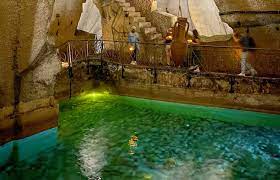 Nel corso dei secoli successivi, le gallerie furono ampliate e utilizzate come rifugi durante le guerre, come caverne per estrarre la pietra e come luoghi di sepoltura per le vittime della peste. Oggi, la Napoli sotterranea è stata recuperata e aperta al pubblico, e rappresenta un’esperienza unica che offre una vista suggestiva sulla storia e la cultura della città. Ci sono molte visite guidate che permettono di esplorare questo mondo sotterraneo, che si estende per oltre 80 km. Uno dei luoghi più famosi da visitare nella Napoli sotterranea è il cimitero delle Fontanelle, un’antica
Nel corso dei secoli successivi, le gallerie furono ampliate e utilizzate come rifugi durante le guerre, come caverne per estrarre la pietra e come luoghi di sepoltura per le vittime della peste. Oggi, la Napoli sotterranea è stata recuperata e aperta al pubblico, e rappresenta un’esperienza unica che offre una vista suggestiva sulla storia e la cultura della città. Ci sono molte visite guidate che permettono di esplorare questo mondo sotterraneo, che si estende per oltre 80 km. Uno dei luoghi più famosi da visitare nella Napoli sotterranea è il cimitero delle Fontanelle, un’antica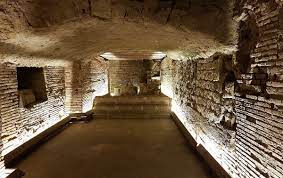 cava di tufo che fu trasformata in un luogo di sepoltura durante la peste del XVII secolo. Qui, i visitatori possono osservare le migliaia di scheletri che sono stati rinvenuti negli anni, e imparare di più sulla storia del luogo attraverso le guide esperte. Altri luoghi interessanti da visitare nella Napoli sotterranea includono le cisterne dell’acquedotto romano, le gallerie utilizzate come rifugi
cava di tufo che fu trasformata in un luogo di sepoltura durante la peste del XVII secolo. Qui, i visitatori possono osservare le migliaia di scheletri che sono stati rinvenuti negli anni, e imparare di più sulla storia del luogo attraverso le guide esperte. Altri luoghi interessanti da visitare nella Napoli sotterranea includono le cisterne dell’acquedotto romano, le gallerie utilizzate come rifugi 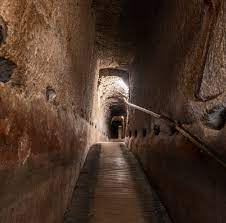 durante la seconda guerra mondiale, e le caverne utilizzate come laboratori di alchimia. In definitiva, ‘Napoli sotterranea’ è un’attrazione unica che rappresenta un’opportunità per scoprire la storia nascosta della città e per avere una visione alternativa di Napoli.
durante la seconda guerra mondiale, e le caverne utilizzate come laboratori di alchimia. In definitiva, ‘Napoli sotterranea’ è un’attrazione unica che rappresenta un’opportunità per scoprire la storia nascosta della città e per avere una visione alternativa di Napoli.
In conclusione, Napoli è una città che non delude mai, e visitarla partendo da Piazza del Plebiscito è un ottimo punto di partenza.






